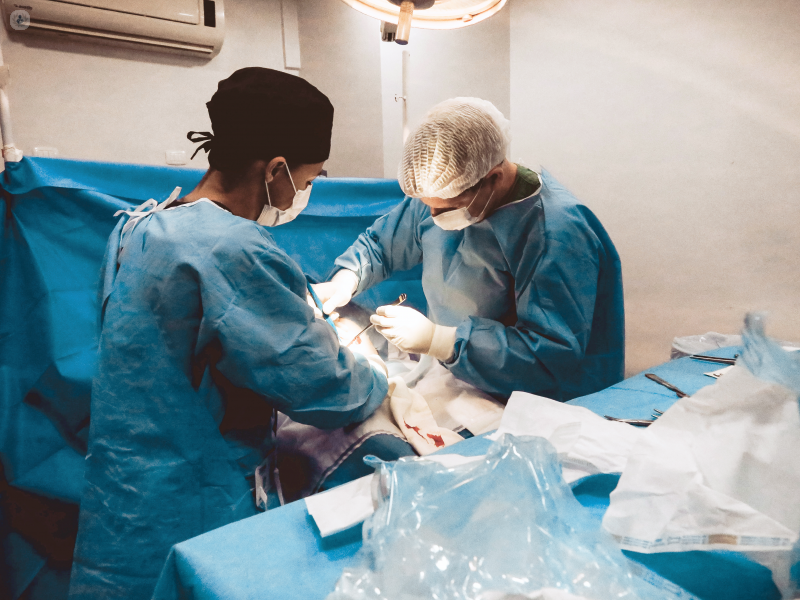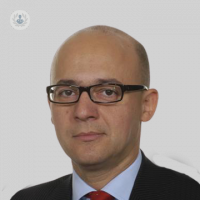Gallstone removal surgery: how is it performed and what are the risks?
Written in association with:Gallstones, unfortunately, don’t go away on their own and if they are persistent and causing discomfort, your surgeon will likely decide that you need to have gallstone surgery to remove your gallbladder.
Mr Radu Mihai is an expert consultant surgeon specialising in treating gallstones. He explained to us what gallbladder surgery involves and the risks and complications you might experience following the procedure.

How are gallstones diagnosed?
When the history of symptoms suggests biliary colic, the first step is to demonstrate the presence of gallstones using abdominal ultrasound. Blood tests will aim to exclude associated infection or jaundice.
Magnetic resonance cholangiopancreatography (MRCP) is used if the ultrasound suggests an enlarged bile duct or if the blood tests show abnormal liver function tests. As you can see below, MRCP image provides the most accurate 3D reconstruction of the gallbladder and its surrounding structures.
Once a decision to proceed with gallstone surgery is secured and an admission date is confirmed, you should:
- Stop all blood-thinning medication several days before the operation (discuss with your surgeon the timing of this change in medication).
- Continue to take all your drugs, such as those for blood pressure or control of diabetes.
- Eat nothing the night before your surgery. You may drink a sip of water with your medications, but avoid eating and drinking at least four hours before your surgery.
How is gallstone surgery performed?
The keyhole approach, known as laparoscopic cholecystectomy, is the standard procedure for the vast majority of patients. Exceptions are rare, such as patients with multiple abdominal operations. The majority of elective patients, however, are suitable for day-case surgery.
At present, there is no evidence to show any benefits from performing single incision laparoscopic surgery (SILS), natural orifice transluminal endoscopic surgery (NOTES) or robotic surgery. Compared with open surgery, laparoscopic cholecystectomy is associated with reduced pain, better cosmesis, early recovery and early return to work and therefore this is the gold standard treatment of gallstones.
Gallstone surgery starts with a small 2cm incision under the umbilicus through which a camera is introduced in the abdominal cavity. Under vision, three trocars are introduced under the rib cage through small 5-10 mm incisions. The operation relies on safe demonstration of the anatomy of the bile duct and its connection to the gallbladder. Clips are applied across the cystic duct and artery and the gallbladder is ‘lifted’ from its liver bed. The gallbladder (and the stones contained within it) are placed into a retrieval bag that is removed through the umbilical port. After a final inspection of the abdominal cavity, the ports are closed with resorbable stitches.
The skin incisions are stitched together with absorbable material. Skin glue is then applied to create a ‘seal’ that allows you to shower without worrying about getting the dressings wet.
What are the risks and potential complications?
Every operation carries risks, but all care is taken to mitigate them.
A recent landmark court case introduced the Montgomery principle, whereby during consent, the medical professional should inform the patient about all risks, irrespective of how small the chances are of them occurring if they could be related to a life-changing event.
The risk of complications after laparoscopic cholecystectomy include:
|
|
|
|
|
|
|
Post-cholecystectomy syndrome
After gallstone surgery, around 5% of patients experience symptoms similar to those caused by gallstones before the operation (pain, indigestion) or develop new symptoms attributed to the gallbladder (gastritis, diarrhoea). This problem is supposed to be caused by changes in bile flow after the removal of the gallbladder. If symptoms persist for more than 3-6 months after the operation, you should seek advice from a gastroenterologist.
What is the short-term and long-term aftercare like following gallstone surgery?
Your operation will be organised as a day-case or with an overnight admission in the hospital. You will receive painkillers to help control the mild abdominal pain you are expected to experience. You should be able to mobilise to the toilet within a few hours after the operation.
If you are going home on the same day, in the following 24 hours you should:
- Drink plenty of fluids, follow a light diet and avoid alcohol.
- Not be left alone in the house.
- Not operate machinery or home appliances – e.g. cooker, kettle, etc.
In the coming days, it is important to move around the house regularly but avoid strenuous exercise. Normal activities may be resumed in approximately one week, but do not do any heavy lifting for at least two weeks. Intense gym exercise, such as weight training would be best delayed for six weeks.
Additionally, after gallstone surgery, you shouldn’t drive until you are comfortable enough to be able to make an emergency stop. This could take at least one week but will more likely take two weeks. You should check with your insurance if they have strict rules about this scenario.
To book an appointment with Mr Radu Mihai, visit his Top Doctors profile and check his next availability.


